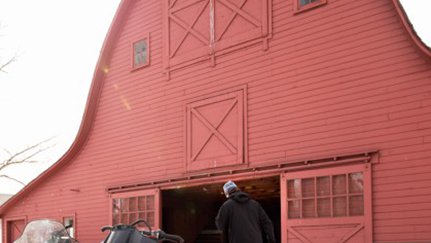Heavy snow and high winds can cause snow to build up fast on farm buildings, and even the strongest, most well-designed roofs can collapse. If you’re in an area where blizzards are common, mitigating the risk of farm building roof collapse calls for two things: a roof snow load management plan and the right insurance.
Snow load is the downward force on a building’s roof exerted by accumulated snow and ice. State building codes mandate snow load ratings based largely on historical weather data, specifically for wind speed/direction and snowfall. For example, Wisconsin Uniform Dwelling Code requires a rating of 30 to 40 pounds/square foot for most structures.
What goes into a roof snow load rating
That same data should be incorporated into the design and construction of every farm building, whether a machinery shop, feed storage structure or livestock barn. Some buildings may be able to withstand a heavy snow load when equally distributed. But blizzard conditions create additional risk by causing drifting and uneven snow distribution that can make an otherwise strong building collapse. Roof snow loads also consider the following variables that influence snow load, its consistency and duration:
- How protected a building’s roof is from wind
- If the building is heated inside
- General purpose of the building
- Roof slope
- Roofing material
- Surrounding structures
Measuring snow load on your buildings
The density of snow and ice per square foot determines how much pressure it exerts on your farm building’s roof. The composition of the snow and/or ice determines the ballpark density, measured in pounds of weight, or pressure, per square foot. According to the University of Wisconsin Cooperative Extension Service, those approximate ranges are:
- Light snow: five to 20 pounds/square foot
- Packed snow: 20 to 40 pounds/square foot
- Packed snow and ice: 40 to 58 pounds/square foot
- Ice: 58 pounds/square foot
To calculate your roof load, multiply the density by the snow/ice depth. For example, a roof with three feet of light snow has an estimated roof load of up to 60 pounds per square foot (three feet times 20 pounds/square foot).
Create your roof snow management plan
Once you know the snow load of your farm buildings and how to get a feel for whether a major snowfall or blizzard has you close to exceeding that load and risking collapse, it’s time to build your plan. Walk through the process for each building on your farm, basing each plan on its initial design’s snow load. Answer these questions in your plan:
- Who checks the roof for snow accumulation?
- On what frequency is the roof checked?
- Who has authority to order snow removal activities?
- Is any special safety training required for those removing snow?
- If an outside company removes snow, does it require pre-approval?
- At what depth of snow on the roof do removal activities begin?
- How are snow drifts on the roof addressed?
- Who inspects the roof for damage after snow removal?
- How are ice dams at the eaves addressed?
Think about roof snow management year-round
Don’t just think about your roof snow management plan during winter. Many roof collapses caused by snow load occur because of deterioration of the structure over time. Inspect all building roofs regularly, paying close attention to structural changes that could lead to imbalanced snow loads.
Changes in roof geometry also contribute to roof collapses. When making an addition to a building like a farm machinery shop, newly added roof sections may not align directly with the existing roof, and variation in roof heights and angles can cause snow to accumulate unevenly. That imbalanced snow load may exceed the original building design load prescribed in building codes. Account for any changes in snow load capacity when planning and building new additions to minimize any additional risk of roof collapse.
For more information about roof snow management, talk to your building contractor or engineer.
